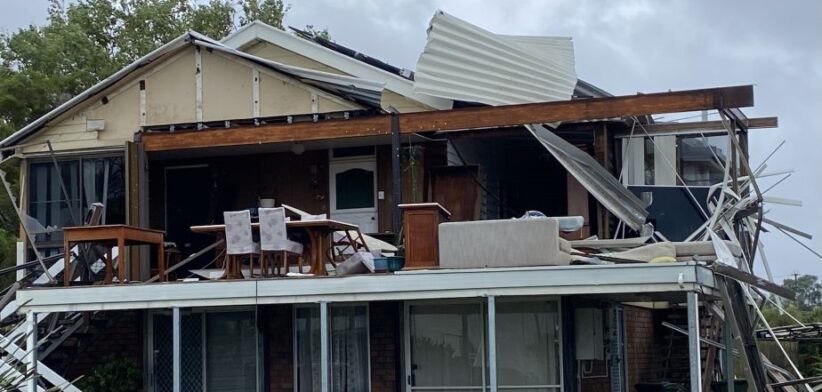Heavy balcony pavers being dislodged by the “relatively low wind speeds” of ex-Tropical Cyclone Alfred has prompted a warning from severe weather experts.
An analysis of the impacts of the low-category system, which hit South-East Queensland in March, showed that even wind speeds of around 100km/h across the impacted zone were enough to reveal several failings in weatherproofing systems, cladding, glazing, and pedestal-mounted balcony pavers.
Natural Hazards Research Australia CEO Andrew Gissing said the James Cook University Testing Station’s report found the region “dodged a bullet” thanks to the weakening of Alfred into a tropical low just prior to landfall.
“This research shows that while the damage from ex-Tropical Cyclone Alfred was less severe than expected, large parts of this was due to a combination of meteorological factors. Southeast Queensland and northeast New South Wales may not be as luckily next time,” Mr Gissing said.
“This research shows some great ways forward to improve safety and resilience against future tropical cyclone threats that we know will be faced in the future.”
Cyclone Testing Station Chief Engineer David Henderson said the weaker than expected impact of Alfred presented valuable lessons into how residents, building owners, and communities could better prepare for future cyclones in South-East Queensland and northeast New South Wales.
“One of the things that we want people to understand is that this was a great practice run in the event a stronger cyclone does eventually arrive in this area,” Dr Henderson said.
“During ex-Tropical Cyclone Alfred, there was minimal structural damage to buildings but we still learned a lot about water ingress, waterproofing, and resilience of fire systems because of water getting inside buildings.
“There were also people who had issues with not being able to work, being inconvenienced by flooding, and experienced a loss of power.”
He said the report made 15 observations for improvement on how to mitigate the impact of future tropical cyclones in the region, centred around the topics of:
- Weatherproofing for buildings.
- Selection of corrosion resistant materials for hidden structural elements.
- Fastening balcony pavers.
- Communications about future tropical cyclones in the area.
- Resilience measures for tall buildings.
Dr Henderson said the failure of some glazing, cladding, and pedestal mounted balcony pavers on tall buildings at Alfred’s relatively low windspeeds was a concern.
“It was an eye opener to have 15kg balcony pavers starting to lift and move around on these modern engineered, commercial structures in an ex-tropical cyclone,” he said.
“On one building, lifted balcony pavers broke the glass balustrades and ended up on the street, several floors below. That’s a real wake up call. If the wind speeds were higher, they would have been potentially deadly flying debris hitting other buildings.”
Read the full report: From storm to study: Insights on resilience from Tropical Cyclone Alfred.








